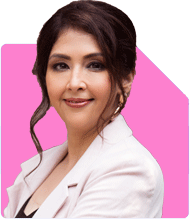Anu Krishna |1745 Answers |Ask -Follow
Relationships Expert, Mind Coach - Answered on Sep 20, 2021
The co-founder of Unfear Changemakers LLP, she has received her neuro linguistic programming training from National Federation of NeuroLinguistic Programming, USA, and her energy work specialisation from the Institute for Inner Studies, Manila.
She is an executive member of the Indian Association of Adolescent Health.... more

My name is 'X' and I belong to a middle class family.
Right now, I am 46 and my marriage was solemnised about 10 yrs back.
It was a totally arranged marriage would like to state here that I didn't like the girl or her appearance right from the start.
I am a teacher by profession and my mother wanted her would be daughter- in law to have a similar background that is like that of a teacher.
Initially, I was hesitant to marry this girl selected by my parents, but then I consented to the marriage thinking that whatever my elders and my parents had thought about my future would be the correct decision related to my life.
Moreover, everybody had started to say that the girl would suit me. But right from the 1st day of marriage, I started resenting the relationship.
Nothing happened between us on the 1st night of marriage.
The girl didn't have any specific faults, but somehow she didn't appear to be attractive at all for me.
The colour of her skin was dark, maybe I wanted a fair skinned girl.
Finally, the situation came to such an extent that she, in collusion with her family, lodged a false case of domestic violence against us because they felt that the girl was unfairly neglected by me.
They also wanted to derive unfair financial gain at my parents and my cost.
The case continued for 7 years and ultimately we won it. And now, after many years, I have once again started to feel that I should marry even though I am of advanced age.
I want a partner who is attractive, beautiful and above all, who is so matured in her outlook that after marriage, we will not even care for any petty issues and not fight over silly matters.
I am also taking the help of Shaadi.com in this matter through all the attractive membership schemes launched by them.
Now, at this juncture, I really need your advice as to whether I should proceed forward and take this step at my age.
This is moreso because as a life partner, I want an elite kind of girl who is far above the kind of girl which we see in most common middle-class societies.
I do not want to disclose my name.
What went wrong with your first marriage maybe anybody’s guess, but there’s no judging here!
Not that, you were coerced into it; you fully know you always had the option of saying you didn’t want to marry the girl.
Yet, you went ahead convincing yourself that your family knew what they were doing for you.
The unfair financial gain that they wanted might have been a direct result of the unfair treatment from you towards their daughter.
Did that occur to you?
You say you want a life partner who will not rake up petty issues and be matured as well, don’t you feel that is what she will expect from you as well?
Since I don’t have the details, it would be unfair of me to presume anymore on this.
It was to simply turn your head towards how your old-fashioned thinking might step into your next marriage as well?
How would you feel if on the first night in your next marriage, your wife comments on your physical appearance or your performance in bed?
Are you going to walk around with a high self-esteem even after that?
Let’s now lead you to a place that can make it a beautiful experience for you…
So much has changed and I truly wish that you look at your spouse for what she can add into your life instead of harping on what she doesn’t possess?
I mean, as humans the flaws that we walk around, if it were pointed to us on a daily basis, it would depress us to a point that we may end up feeling that we are not good enough.
What I would suggest after having worked with couples over years helping them rebuild their marriages is to change your way of thinking and embrace the next person for who she is once you know your initial check boxes have been ticked that might involve matching value systems.
This helps in rooting your marriage on a strong foundation; rain or storm, the two of you will be smiling and holding hands to walk the journey together.
Wishing you a beautiful life!
You may like to see similar questions and answers below
Anu Krishna |1745 Answers |Ask -Follow
Relationships Expert, Mind Coach - Answered on Mar 23, 2023
Anu Krishna |1745 Answers |Ask -Follow
Relationships Expert, Mind Coach - Answered on May 19, 2025
Kanchan Rai |645 Answers |Ask -Follow
Relationships Expert, Mind Coach - Answered on May 23, 2025
Dr Dipankar Dutta |1837 Answers |Ask -Follow
Tech Careers and Skill Development Expert - Answered on Dec 05, 2025
Dr Shyam Jamalabad |108 Answers |Ask -Follow
Dentist - Answered on Dec 05, 2025
Dr Shyam Jamalabad |108 Answers |Ask -Follow
Dentist - Answered on Dec 05, 2025
Dr Shyam Jamalabad |108 Answers |Ask -Follow
Dentist - Answered on Dec 05, 2025
Dr Dipankar Dutta |1837 Answers |Ask -Follow
Tech Careers and Skill Development Expert - Answered on Dec 05, 2025
Ulhas Joshi |280 Answers |Ask -Follow
Mutual Fund Expert - Answered on Dec 05, 2025
Dr Dipankar Dutta |1837 Answers |Ask -Follow
Tech Careers and Skill Development Expert - Answered on Dec 04, 2025
Ravi Mittal |676 Answers |Ask -Follow
Dating, Relationships Expert - Answered on Dec 04, 2025
Anu Krishna |1745 Answers |Ask -Follow
Relationships Expert, Mind Coach - Answered on Dec 04, 2025
Anu Krishna |1745 Answers |Ask -Follow
Relationships Expert, Mind Coach - Answered on Dec 04, 2025

























